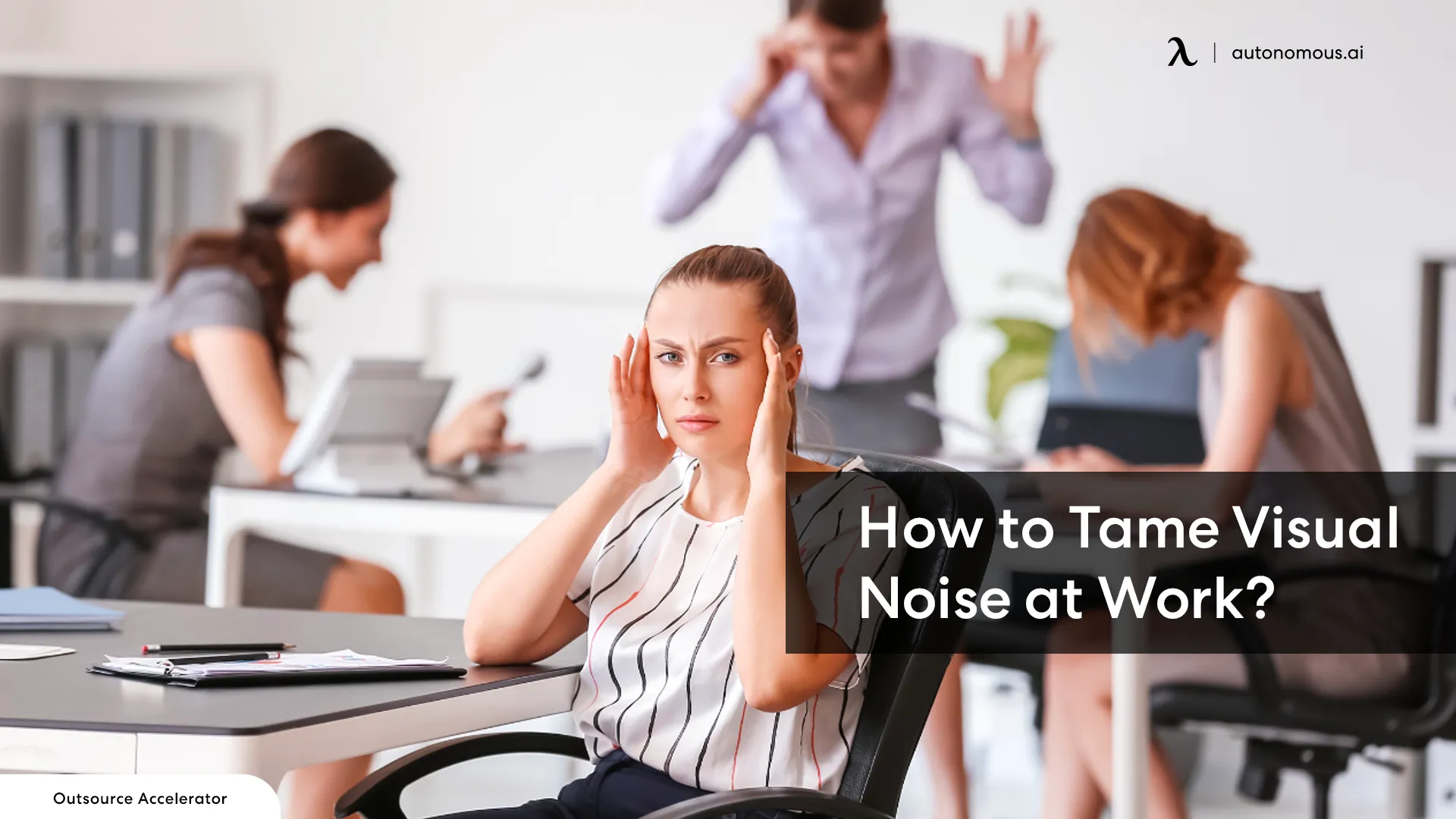
Taming Visual Noise at Work: Strategies for a Focused Environment
We all have had a moment where a cluttered desk, a gathering of people, or some other random thing that shouldn't disturb us manages to make our concentration and productivity weak. If you've suffered from any of these things, you are a victim of visual noise, affecting more than just your concentration when a task is going on.
It's a phenomenon as common as all other kinds of noise, and managing it can boost your efficiency and make your work experience much less daunting and painful to your senses. So let’s read on to find out more on it.
What Is Visual Noise?
In general, the visual noise definition refers to unwanted and disruptive things that might distract or otherwise disturb you by being in your field of vision. This can be purely a visual phenomena like excessive lighting, complicated interior design, or even bright paint. But it also includes things like big crowds and a TV showing something important.
Basically, anything that, when in your vision, whether direct or in the periphery, will cause you to focus on it unnecessarily can be called visual noise, and it is a bigger issue than you think.
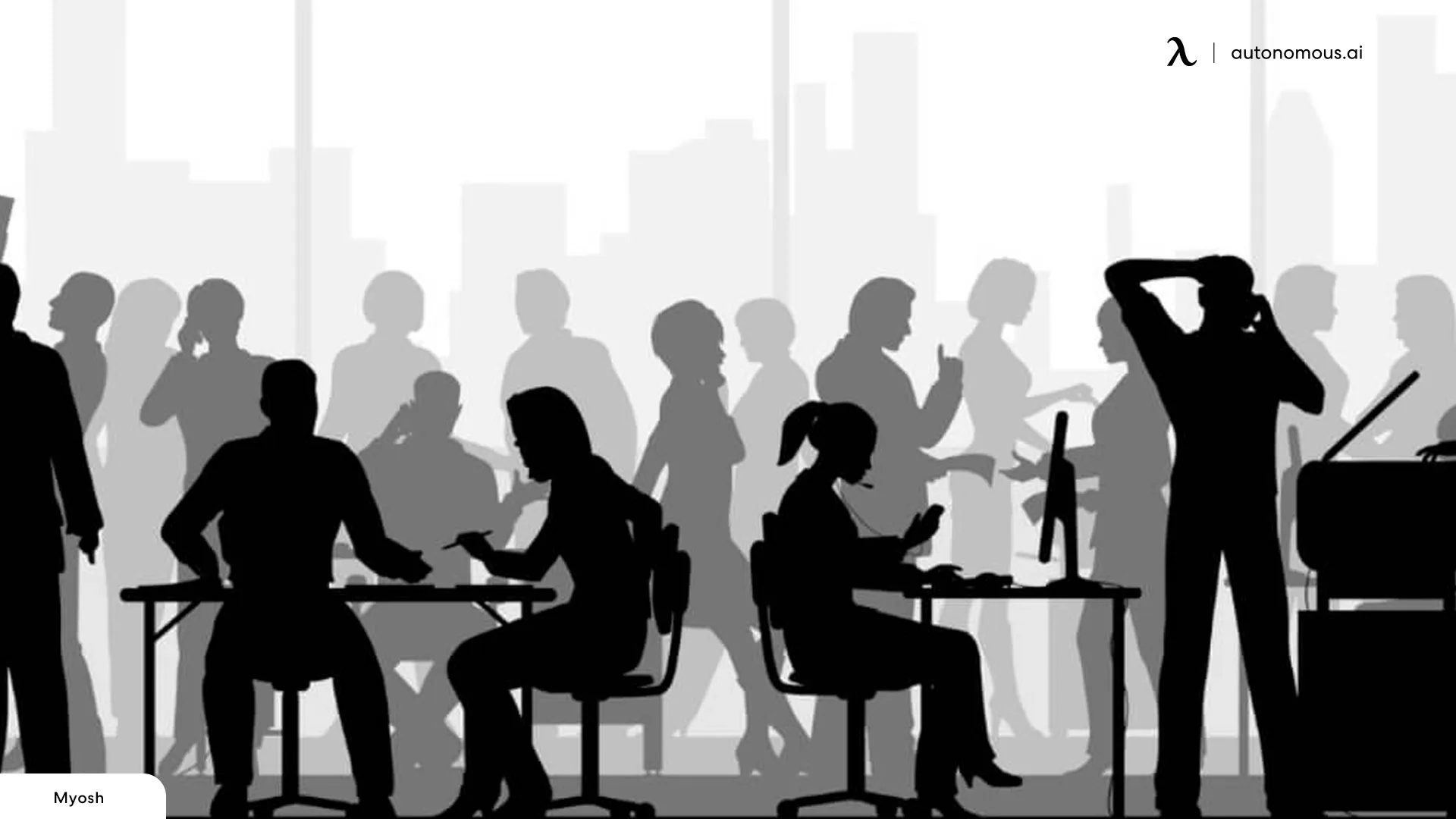
What Does Visual Distraction Do?
As you can imagine, the biggest problem caused by visual noise and other visual distractions is the loss of concentration and productivity resulting from it. But it can also cause things like overstimulation, mental fatigue, and even unnecessary stress and anxiety, especially if it involves coworkers or employers.
Therefore, sitting in a clean, empty room can be physically relaxing to people even though they haven't actually gotten any physical treatment.

What Can We Do About It?
As you can imagine, there are tons of potential strategies for managing visual noise. Some companies like AT&T have tried installing things like dedicated, single-person workstations at their San Ramon, Calif., offices to reduce visual distraction. But for most workspaces and for most people, the main tips you have to keep in mind would be the following.
1. Keep it Basic
While this rule might sound obvious, all it takes is a look around an average office to see just how much unnecessary stuff is lying around. Using things like organizers and simpler furniture like dedicated office desks will make a world of difference in making your workspace the most effective and least visually noisy it can be. The mantra of "less is more" will be your best friend, so go for small office designs instead of the usual giant, overcomplicated messes that pass for workstations these days.
2. Separate and Categorize
One of the things that plague most office workspaces is just how scattered everything is. The coffee machines may be in the same area as the file organizers, the printer next to the bathroom, and all other similar nonsense. And simply making sure that everything goes with what it is closest to can make a huge difference.
This goes further from simple closet or furniture organization too, making sure that only the workers that have to interact sit together, and using things like a desk privacy screen to separate different areas of the office into separate sections can make the space feel a lot less cluttered while cutting down on a lot of visual noise.
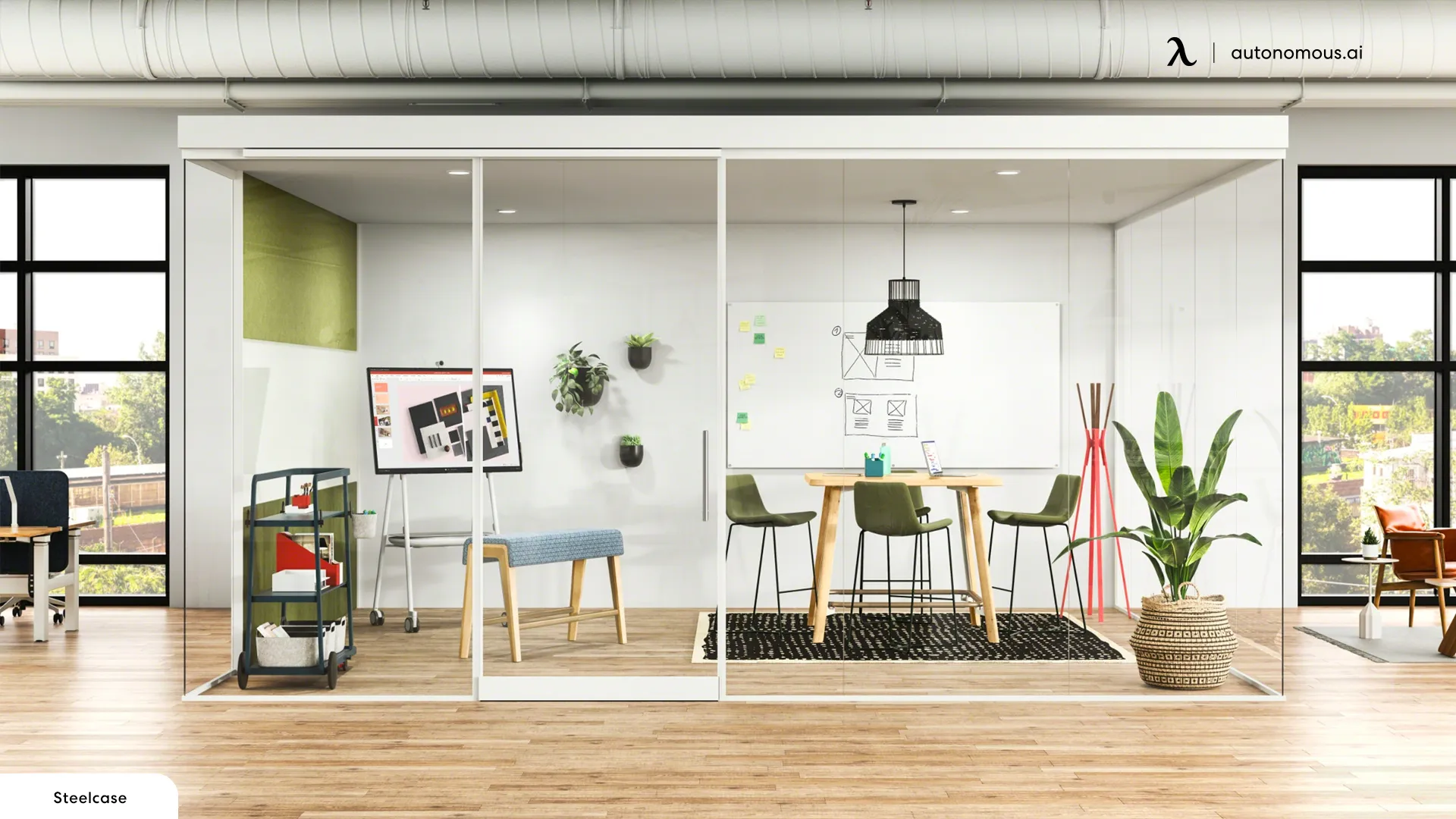
3. Use and Manage Colors
Now, while we mentioned colors as an example of visual distraction earlier, with the right application, they can actually be your friend. In fact, colors are often used by interior designers to affect the occupant's moods, so having color-based organization and uniformity in your office cubicle instead of the regular sharp, disjointed colors might be the thing that softens your eyes against visual noise. At the same time, using too many colors does the opposite, so be deliberate with your use of colors.
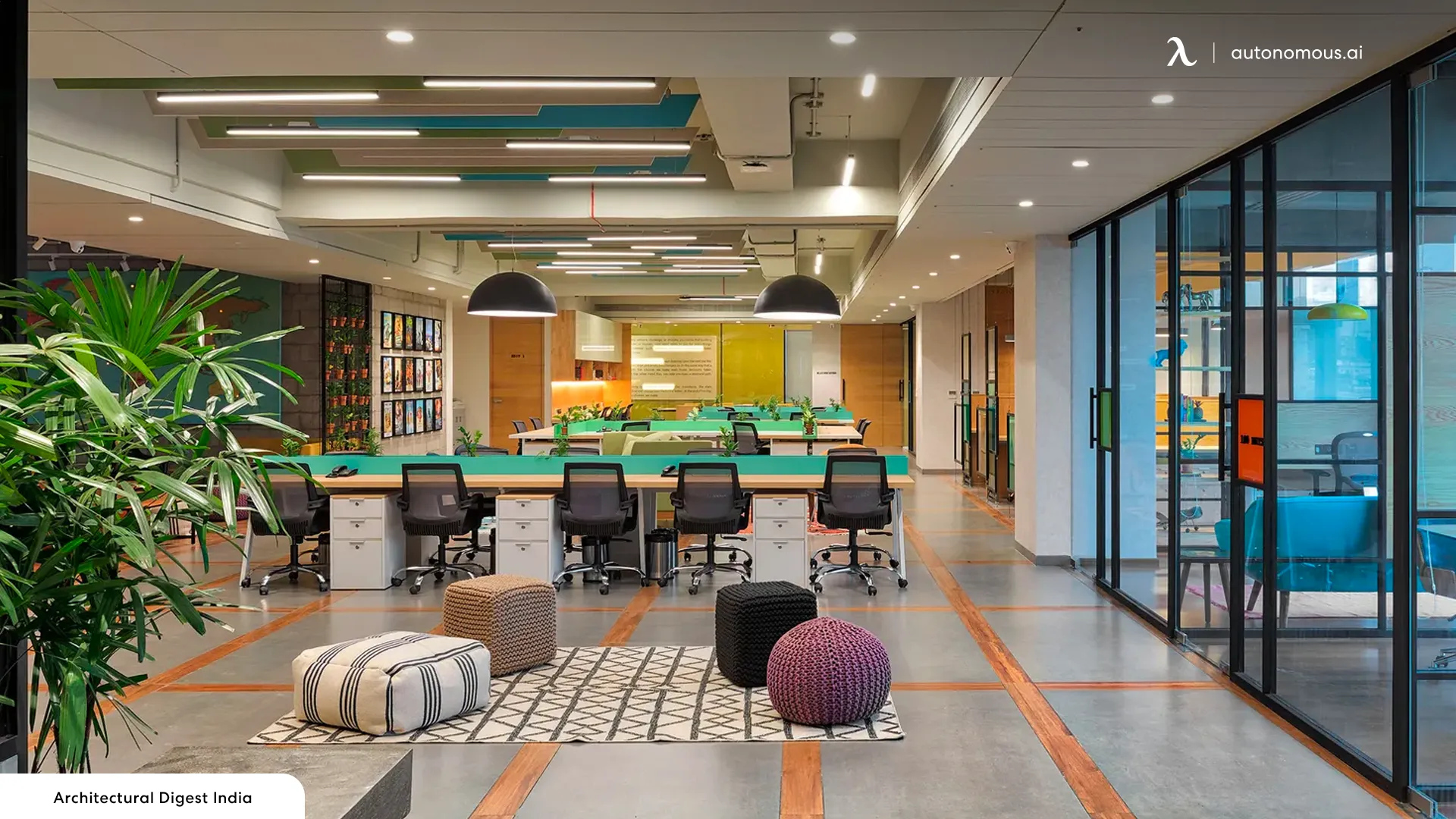
4. Light is Your Friend
Lighting that is too dim, too bright, too contrasted, or even too cool or warm can be a huge source of visual noise in a workspace and is a big facilitator in causing visual noise syndrome. So, it is important to choose the right kind of light for your workspace. This would mean soft, slightly warm, uniform lights that are placed in spots that don't cause much glare. Another way of implementing good lighting is with the use of daylight, which can introduce the benefits of things like outdoor office space, all of which will make your work experience much healthier in terms of visual noise.
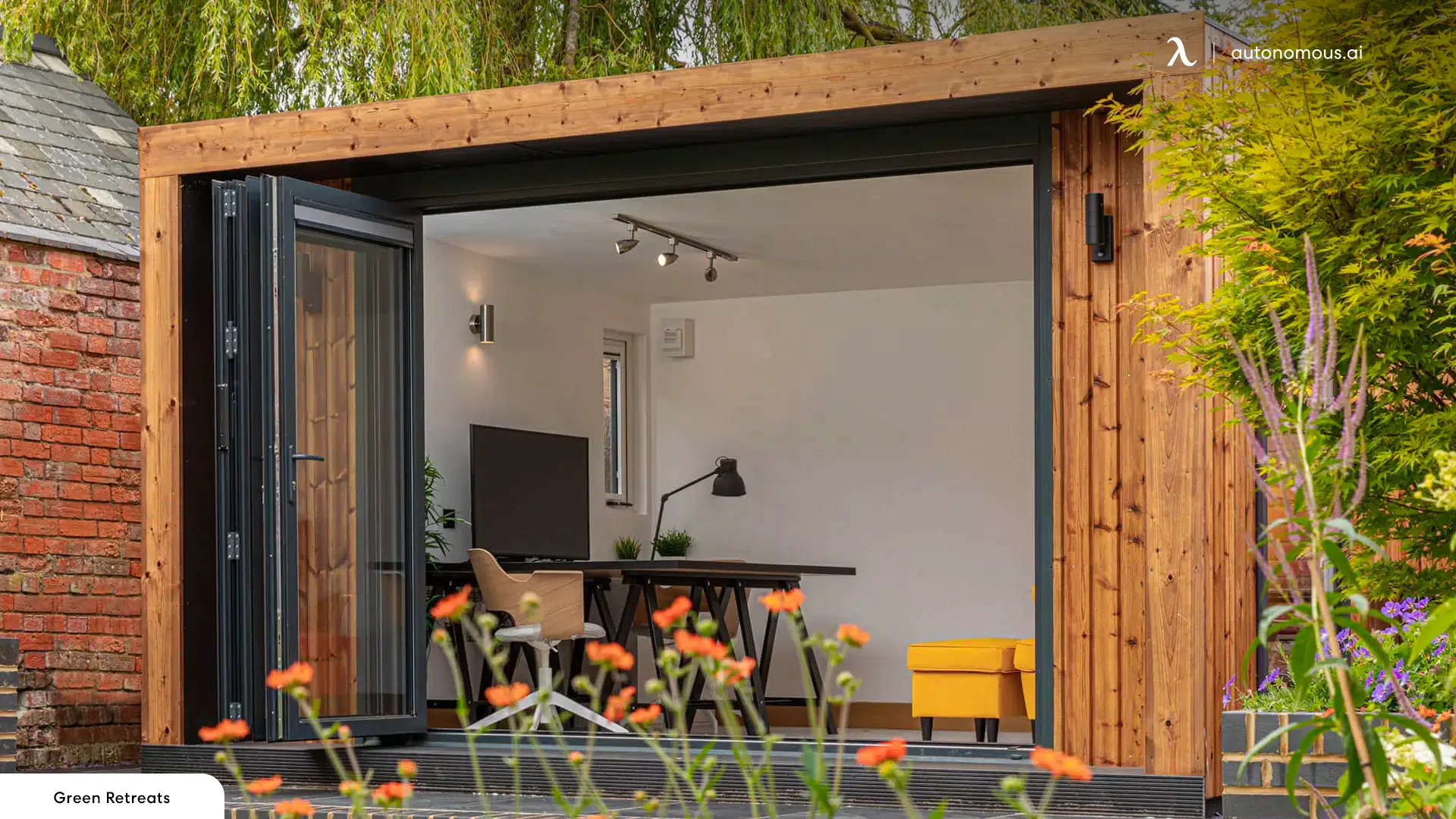
5. Identify the Noise
This is by far the most obvious tip but is also just as difficult to handle because the source of the noise might not be an over cluttered desk as it is in most cases, but something like a water cooler that attracts too many visitors or maybe a badly placed window. The best way to manage this would be by consulting a proper office space layout and slowly implementing the rules presented in these layouts in your own workspace.
Bottom Line
All in all, visual noise and related afflictions like the visual noise syndrome are not things to be taken lightly, and luckily for us, by following the few simple tips we've mentioned here, you should be able to make your work environment feel a lot less cluttered to your own benefit and of those who work with you.
And that covers our guide on managing visual noise at work. We hope you found the guide helpful, and if you did, remember to share this with your friends. With that, stay curious, guys, and thanks for reading.
Subscribe for a 10% discount on your first order.
Sign up for our weekly update and be the first to know about our specials & promotions.


/https://storage.googleapis.com/s3-autonomous-upgrade-3/production/ecm/240417/april-10-off-offer-2024-1920x540-CTA.jpg)
/https://storage.googleapis.com/s3-autonomous-upgrade-3/production/ecm/240417/april-10-off-offer-2024-720x1200-CTA.jpg)
/https://storage.googleapis.com/s3-autonomous-upgrade-3/production/ecm/240415/bulk-order-apr-2024-offer-720x1200-CTA-min.jpg)

/https://storage.googleapis.com/s3-autonomous-upgrade-3/static/upload/images/new_post_author/admin-1.png)